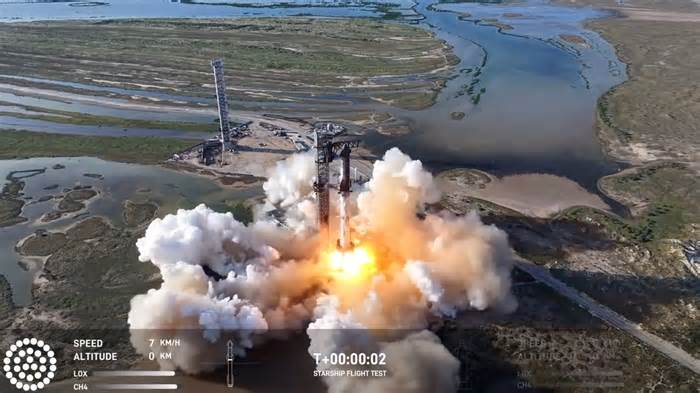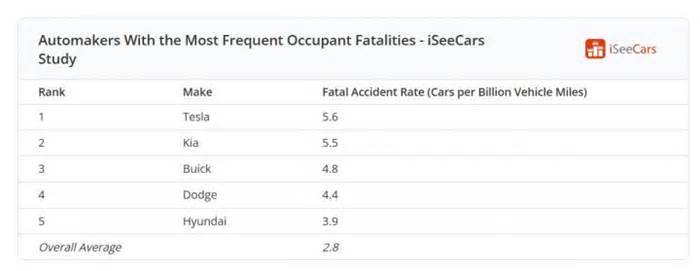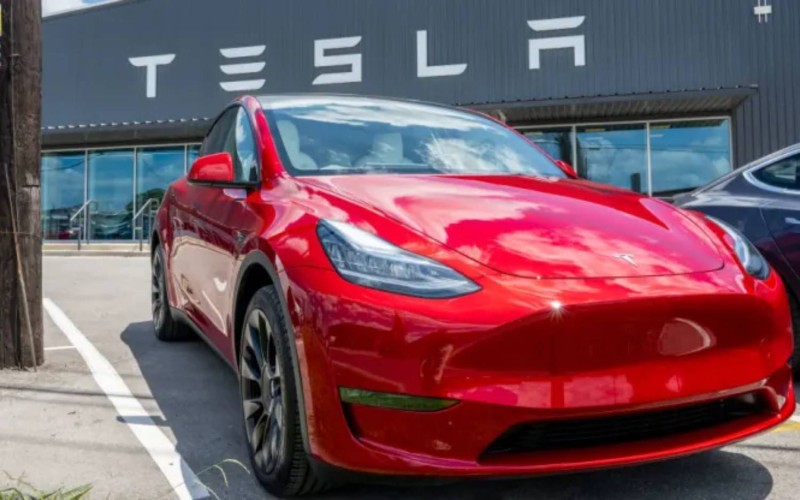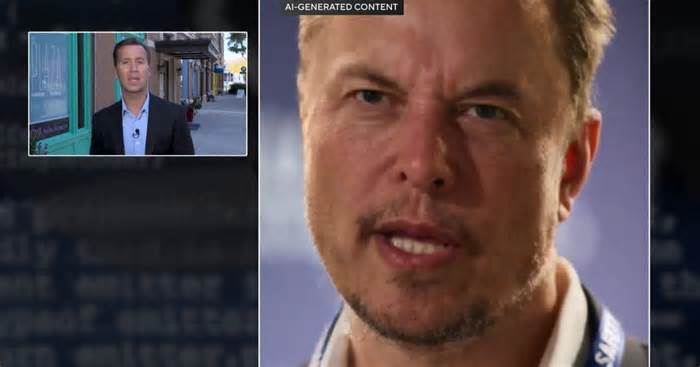
SpaceX Starship launches banana to space, skips giant rocket catch on 6th test flight (video, photos)
- by Space on MSN.com
- Nov 19, 2024
- 0 Comments
- 0 Likes Flag 0 Of 5

An action-packed flight
Today's mission aimed to do far more than just bring Super Heavy back to Earth in one piece. SpaceX also wanted to put Starship's upper stage — a 165-foot-tall (50 m) spacecraft called Starship, or simply "Ship" — through its paces.
The launch sent Ship on the same semi-orbital trajectory that it took on Flight 5, targeting a splashdown in the Indian Ocean off the northwestern coast of Australia about 65 minutes after liftoff. But Ship also achieved some new milestones along the way this time.
For example, Flight 6 carried the first-ever Starship payload — a plush banana onboard Ship, which served as a zero-gravity indicator. (It was not deployed into space.) In addition, Ship briefly re-lit one of its six Raptor engines about 38 minutes into the flight. (Super Heavy also employs Raptors — a whopping 33 of them.)
This burn helped show that Ship can perform the maneuvers needed to come back to Earth safely during orbital missions. Indeed, Ship is designed to be fully and rapidly reusable, just like Super Heavy; SpaceX eventually intends to catch it with the chopstick arms as well, and will likely try to do so on a test flight in the near future. (Landing directly on the launch mount, rather than on a ship at sea or a designated touchdown pad, will enable quicker and more efficient inspection, refurbishment and reflight, SpaceX has said.)
Starship's Super Heavy Flight 6 booster hovers over the Gulf of Mexico shortly before splashdown on Nov. 19, 2024.
(Image credit: SpaceX)
Flight 6 also tested modifications to Ship's heat shield, which protects the vehicle during reentry to Earth's atmosphere.
"The flight test will assess new secondary thermal protection materials and will have entire sections of heat shield tiles removed on either side of the ship in locations being studied for catch-enabling hardware on future vehicles," SpaceX wrote in a mission description. "The ship also will intentionally fly at a higher angle of attack in the final phase of descent, purposefully stressing the limits of flap control to gain data on future landing profiles."
SpaceX also shifted the launch time for Flight 6, to allow for better observation of Ship's reentry and splashdown. Flight 5 (and all four of its predecessors) lifted off from Texas in the morning, and Ship came down in darkness on the other side of the world.
The upper stage of SpaceX's Starship vehicle cruises above Earth during the vehicle's sixth test flight, on Nov. 19, 2024.
(Image credit: SpaceX)
So we all got great views of Ship's return to Earth today, which went swimmingly. The shiny silver vehicle survived its scorching-hot trip through the planet's atmosphere, fired up three of its six Raptors to flip itself into a vertical position as it approached the water, and hit the waves base-first as planned 65.5 minutes after liftoff.
"Incredible! We really pushed the limits on Ship, and it made it all the way back down to Earth," Jessica Anderson, SpaceX manufacturing engineering manager, said during today's webcast.
"I am shocked, to be honest," added webcast co-host Kate Tice, a senior quality engineering manager at SpaceX. "I think many folks are. The fact that it survived all the way through while flying a lesser-gen heat shield is just absolutely incredible."
Please first to comment
Related Post
Stay Connected
Tweets by elonmuskTo get the latest tweets please make sure you are logged in on X on this browser.
Sponsored
Popular Post
Tesla: Buy This Dip, Energy Growth And Margin Recovery Are Vastly Underappreciated
28 ViewsJul 29 ,2024






 Energy
Energy



















